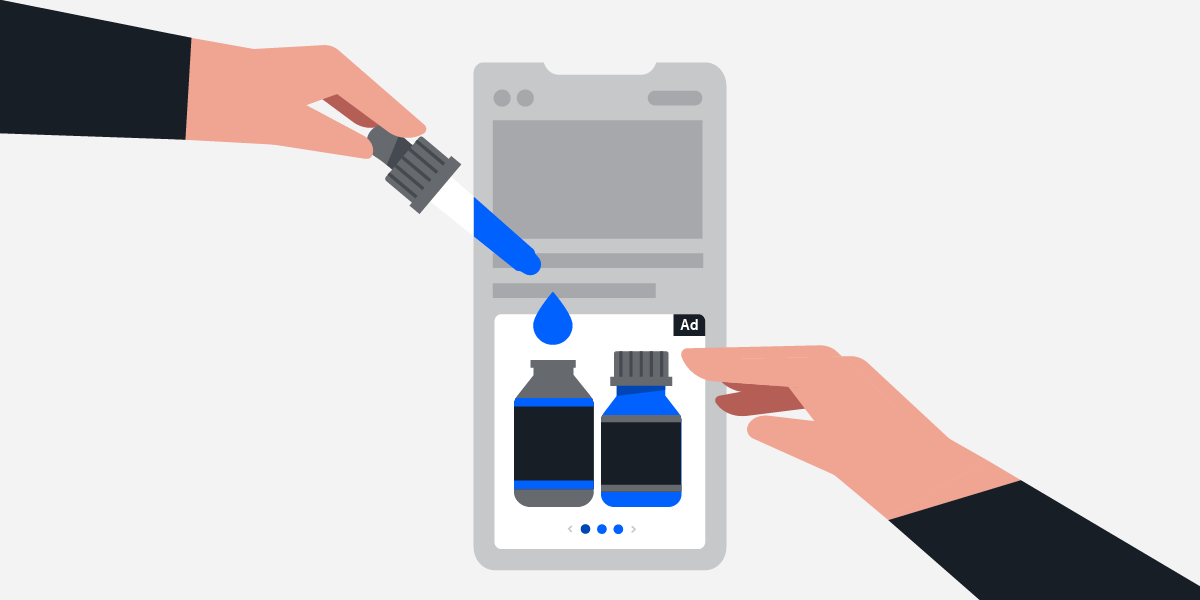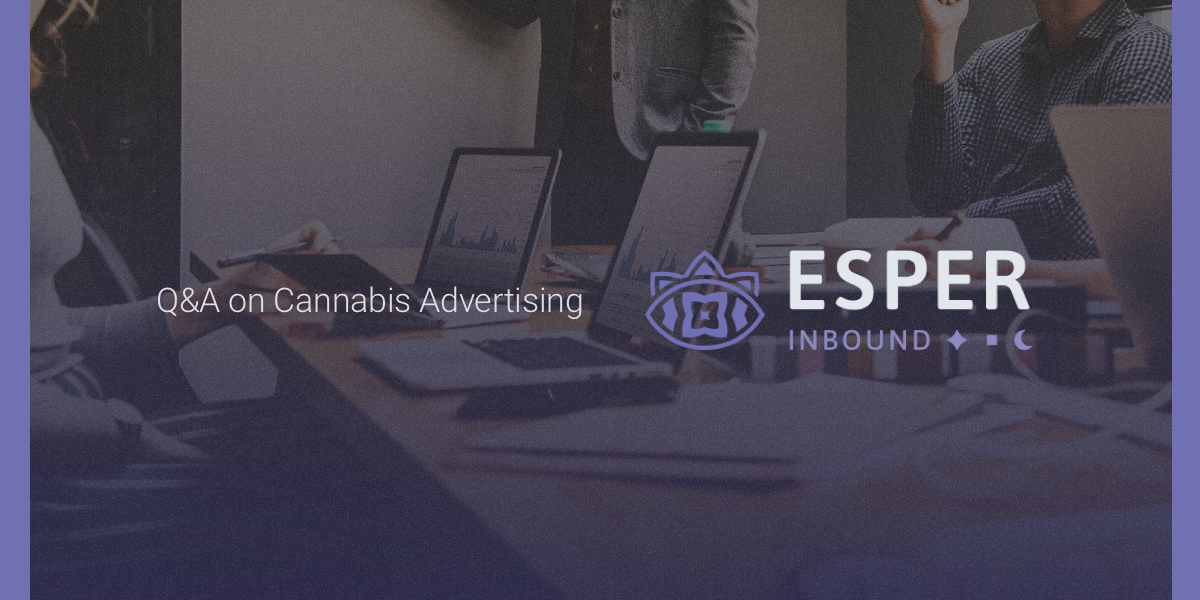Abacus is an agency based in Toronto and New York that focuses on building creative content and running performance-based media campaigns. Working with a wide variety of clients, a large part of their agency clientele are Cannabis and CBD brands.
In July 2019, we sat down with Peter Reitano, the Co-founder and CEO of Abacus, to discuss how agencies and brands can excel in the cannabis landscape, despite regulations set out by the government to restrict how these companies are able to get their brand out to potential customers. In February 2020, we were able to revisit our conversation with Peter at StackDay 2020 to gain fresh insight on how the industry has changed over the last 8 months, and where he sees it going in the future.
Peter, the last time you sat down with us was 8 months ago, how do you feel the space has changed in that time?
It’s been really interesting; there has been a lot of consolidation, a lot of mergers, and a lot of buy outs. If you’re looking at it from the outside, one angle looks at the fact that the capital markets have all dropped down, resulting in a slump in the industry as well as layoffs; that’s kind of the negative. On the positive side, we’ve seen new markets open up, and we’ve seen some incredible brands grow; not to mention that in Canada, we’ve seen the retail restrictions loosen up a bit too, which means that the supply can get through into the market and hopefully that will cause more growth.
We’ve seen Cannabis 2.0 come online; so more products, edibles, that kind of stuff are more available to the public. There’s been a lot of interesting changes as well as a shake up, but I think that’s totally normal in a nascent industry. We’ve seen a lot of hype, a lot of capital influx, and then kind of a drawback; similar to what happened with the dot-com boom in that we had a lot of companies blow up and some that disappeared (or were bought out), and now we’re seeing a kind of emergence of the players in this space with the brands and companies that really know how to look after the business fundamentals.
Since the industry is going through a bit of a slump right now with a lot of cannabis companies closing, laying off employees, etc; what role do think programmatic advertising has in helping these companies stay afloat?
Generally speaking, in any kind of downturn, or in any kind of recession, the first thing that gets cut is anything that can’t be tied back to a dollar like marketing, awareness, or brand-focussed efforts. On the flip side, anything that’s performance related that’s clearly driving sales, generally has more money allocated to it. Programmatic serves an important role because it’s trackable, and it’s performance-focused when it’s done well. As programmatic offers different placements when you’re advertising a product that would otherwise be restricted, unlike any other consumer packaged good, we offer it to our clients to drive sales. Where social media or search limits you, programmatic provides a compliant solution for brands looking to showcase their products.
At Abacus, programmatic allows us to advertise our clients on premium websites, find the audience(s) that we want to find, and drive them to a desired end point; not to mention that there’s all sorts of interesting ways to track the results. With that said, in Canada, because everything is sold through government websites or licensed retail stores, you can’t really track digital conversions very well—yet—but you can track in-store foot traffic to an extent with programmatic.
Ultimately, it’s super useful to gauge what people are seeing online and whether they’re actually going into stores and taking action based on the advertising that you’re running.
With Abacus’ cannabis clients, what are some of the campaign goals you’ve noticed in the current industry climate?
Clients want to build strong brands overall, but it differs between Canada and the US. In the US, it’s a lot easier to build a brand, because there’s a lot less restrictions, especially with packaging. In Canada, companies also want to build brands, but a big focus has to be on driving sales because a lot of the brand side is fairly restricted.
That’s an interesting note about Canadian brands. When cannabis first legalized here (Canada), what was the focus on the brand like pre-regulation versus post-regulation?
When we worked with brands pre-regulation (and before it was technically legal), a lot of these Licensed Producers (LPs) were just building brands by getting celebrity endorsements, as well as investing money in out-of-home placements.
Post-regulation it’s been a bit different because everybody’s a little bit more cautious about how they advertise, especially when it’s age-gated. There are rules and regulations that need to be adhered to, so that you do not risk losing your license—there is an enormous cost to brands as a result.
Today, there’s a larger focus on running media—specifically advertising—that is brand focused, drives sales and it’s still compliant. Some brands have more of a risk tolerance than others, but certainly nobody is funnelling budget into out-of-home ads that wouldn’t be considered compliant by today’s standards.
With Abacus specifically, how are you finding a balance between delivering brand messages through high-quality creative and still remaining compliant?
We think a lot about that, actually.
A big part of our business is creating content that’s interesting to the buyer personas that we’re targeting for each brand, and then getting that content out in meaningful ways, and in places where people are living, interacting—whether that’s online or offline.
How we go about creating content, is the same as any other vertical, just with specific rules. For example, you cannot portray a lifestyle, or people in the creative. With that said, there are loads of creative ways that we think about content and how to get the message out.
Do you have any examples?
Last year we worked with a famous photographer in Canada. We did a no-holds barred shoot, then took all of the content that we didn’t use for advertising right away, and posted it to their social feed. They used it in their future artwork and that got a lot of exposure and hype. At Abacus, we used some of those pieces for our creatives and for our organic social content, that would still be considered compliant.
When building brand names, you still have a lot of scope with organic posts, organic social, and creating a lot of meaningful written content that’s SEO optimized. Additionally, there’s a lot of cause-related content that cannabis companies can leverage to boost brand perception. And of course, let’s not forget experiential marketing. There is freedom to be creative, as long as you don’t break any rules.
Does Abacus rely on partners to help stay informed on regulations, so that you can free up more time to focus on creative work and servicing your clientbase?
We’ve got a good understanding of the rules having worked in it for quite a while. The brands we work with have input, and they have some knowledge, but more specifically partners like StackAdapt have been great for making sure everything is in check.
How has StackAdapt been helpful?
Any time we bring campaigns to StackAdapt, it goes through your (Platform Quality) team, and we’ve received helpful feedback. For example, we will get advice on what it would take to get a piece of creative not only compliant, but on par for the ad exchanges and what’s going to ensure they accept this content.
StackAdapt has been a great partner on that front. As we come up with campaigns with our brands, we seek campaign advice from StackAdapt, and we’ve received detailed assistance on how to ensure content is compliant.
Do you feel that compliance regulations will loosen up a bit to help the growth of these cannabis businesses?
I think Canada started off ultra conservative. The product roadmap for the government is to observe and see how the industry is moving, gather the feedback, identify the customers, brands and stakeholders, and make adjustments to the regulations accordingly—albeit, quite slowly.
Do I think it’s going to loosen up? For sure—it has to loosen up. And there’s no good reason to have restrictions on cannabis advertising, when we have completely different rules for alcohol or any of these other recreational substances. There’s no good reason or public health reason. In my opinion, the Canadian government is just being cautious at the moment.
Do you think the Canadian government will work with these companies, or do you think there will be consistent pushback where businesses aren’t able to reach their potential?
It would be a big miss if the Canadian government didn’t at least loosen up a bit and start to work with these businesses. Do I think they will work more in their favour? I hope so.
We’ve had a 2-3 year head start on building out brands, even though we’ve been restricted. If we get a bit more leeway, we can build brands that could become globally recognized cannabis brands. We have got this massive, global growth, and Canada has got the pull position. If we’re given the ability to grow brands, we can have massive market share.
With that said, if we leave it too long, and the US brand machine comes online, they’re going to dominate (compared to Canada).
So, there’s huge growth potential and we have a huge advantage in the Canadian cannabis industry; that’s why I think the government can and should loosen up. Eventually, they’ll start to take feedback from stakeholders, lobby groups and think tanks, to look at ways to evolve the industry.
Overall, there’s a lot of positive movement coming our way.
To close it off things off, do you have any key insights on where the industry is going as a whole? What does the next year for cannabis look like?
Now is a time for testing and experimentation. There’s a lot of grey zone in the rules and a lot of changes to stay on top of—all of which come with testing and experimenting. That’s why it’s important to advertise in ways where you can test different creatives to determine how and where everything will work really well.
Where do I see it going? I see an enormous amount of scope and growth both in the US and Canada. If I’m being honest, I’m optimistic. I’m extremely hopeful when it comes to the cannabis industry. I’m optimistic about the government in Canada making the right changes, and I’m optimistic that the global current and tide has turned against the prohibiting of this recreational and medicinal substance.
You can see that all over the world. You’ve got all of these markets opening up—in the US, they will (potentially) federally legalize it. Canada needs to loosen up its regulations—it’s in a great position because it’s been legalized for 2 years, and as a result they have been developing brands, systems, and technologies to support it.
There’s a tonne of growth and we’re still in the first waves of the cannabis industry, we really are. We’re in the first innings of the types of products you can buy, and we’re in the first innings of brand building.
Navigating the cannabis landscape does not need to be a challenge—StackAdapt can help! Get your copy of The Programmatic Playbook for Cannabis Marketers.




